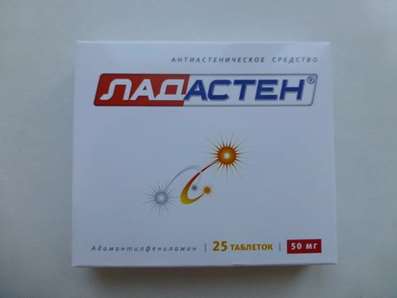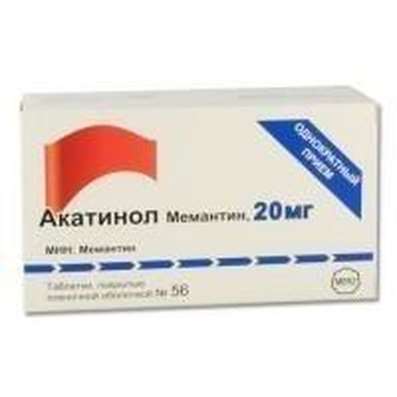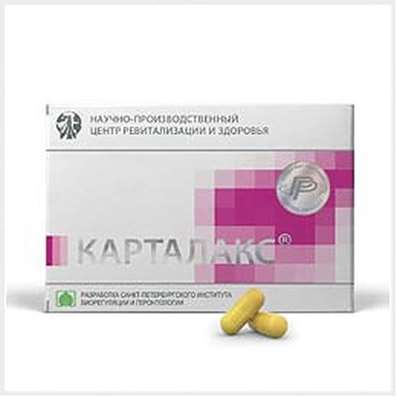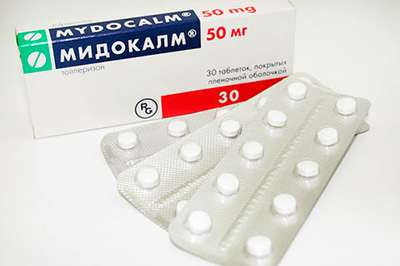Instruction for use: Cyproheptadine
I want this, give me price
The Latin name of the substance Cyproheptadine
Cyproheptadinum (genus. Cyproheptadini)
Chemical name
4- (5H-Dibenzo [a, d] cyclohepten-5-ylidene) -1-methylpiperidine (as hydrochloride)
Gross formula
C21H21N
Pharmacological groups
H1-Antihistamines
Serotonergic agents
The nosological classification (ICD-10)
G43 Migraine: The pain of migraine; Migraine; hemiplegic migraine; Migraine headache; A migraine attack; Continuous headache; hemicranias
H10.1 Acute atopic conjunctivitis: Allergic conjunctivitis; Allergic eye diseases; Allergic conjunctivitis; Allergic conjunctivitis caused by chemical and physical factors; Allergic rhinoconjunctivitis; Allergic inflammation of the eyes; Spring Qatar; Spring keratitis; Spring conjunctivitis; Conjunctivitis allergic; Year-round allergic conjunctivitis; Exacerbation of pollinosis in the form of rhinoconjunctival syndrome; Acute allergic keratoconjunctivitis; Acute allergic conjunctivitis; Superficial bacterial infection of the eyes; Rhinoconjunctivitis; Seasonal allergic conjunctivitis; Seasonal conjunctivitis; SENSORY; Chronic allergic keratoconjunctivitis; Chronic allergic conjunctivitis
J30 Vasomotor and allergic rhinitis: Allergic rhinopathy; Allergic rhinosinusopathy; Allergic diseases of the upper respiratory tract; Allergic rhinitis; Allergic rhinitis seasonal; Vasomotor runny nose; Prolonged allergic rhinitis; All-year-round allergic rhinitis; All-year allergic rhinitis; Year-round or seasonal allergic rhinitis; All-the-year-round rhinitis of an allergic nature; Rhinitis vasomotor allergic; Exacerbation of pollinosis in the form of rhinoconjunctival syndrome; Acute allergic rhinitis; Edema of the nasal mucosa; Edema of the nasal mucosa; Edema of the mucous membrane of the nasal cavity; Swelling of the nasal mucosa; Swelling of the nasal mucosa; Pollinosis; Permanent allergic rhinitis; Rhinoconjunctivitis; Rhinosinusitis; Rhinosinusopathy; Seasonal allergic rhinitis; Seasonal allergic rhinitis; Hay rhinitis; Chronic allergic rhinitis; Allergic diseases of the respiratory tract
K86.1 Other chronic pancreatitis: Chronic pancreatitis; Pancreatitis recurrent; Pancreatitis chronic; Exacerbation of chronic pancreatitis; Pancreatitis with exocrine insufficiency
L20 Atopic dermatitis: Allergic diseases of the skin; Allergic skin disease noninfectious etiology; Allergic skin disease etiology nemikrobnoy; Allergic skin diseases; Allergic skin lesions; Allergic reactions on the skin; atopic dermatitis; Allergic dermatosis; Allergic diathesis; Allergic itching dermatosis; Allergic skin disease; Allergic skin irritation; allergic Dermatitis; atopic Dermatitis; allergic dermatoses; exudative diathesis; Itchy atopic eczema Itchy allergic dermatosis; Allergic skin disease; Cutaneous allergic reaction to drugs and chemicals; Cutaneous reactions to medications; Skin and allergic disease; Acute eczema; common neurodermatitis; Chronic atopic dermatitis; Exudative diathesis
L23 Allergic contact dermatitis: Allergic dermatitis;Purulent allergic dermatopathies; Contact allergic reaction; Contact allergic dermatitis; Contact allergic dermatitis; Photoallergic contact dermatitis
L29 Itching: Itching with partial obstruction of the biliary tract; Dermatitis itchy; Dermatosis with persistent itching; Other itching dermatoses; Itching dermatoses; Itching allergic dermatosis; Itching dermatitis; Itching dermatosis; Itching itch; Excruciating itching; Severe itching; Endogenous itching; Skin itching with dermatosis; Restricted itchy dermatitis; Itching of the skin; Itchy scalp; Itching eczema
L30.9 Unspecified Dermatitis: Allergic dermatoses complicated by a secondary bacterial infection; Anal eczema; Bacterial maturation; Varicose Eczema; Venous dermatitis; Inflammation of the skin; Inflammation of the skin upon contact with plants; Inflammatory Skin Disease; Inflammatory Skin Diseases; Inflammatory Skin Diseases; Inflammatory skin reactions; Inflammatory processes of the skin; Hypostatic dermatitis; Fungal Eczema; Fungal dermatosis; Dermatitis; Dermatitis is stagnant; Dermatitis and eczema in the anal area; Dermatitis acute contact; Perianal dermatitis; Dermatosis; Dermatosis of the scalp; Dermatosis of psoriasis; Dermatosis with persistent itching; Dermatoses; Dermatoses itchy; Other itching dermatoses; Significant eczematous manifestations; Itching with dermatoses; Itching eczema; Itching dermatoses; Itching dermatitis; Itching dermatosis; True eczema; Skin reaction to insect bites; Skin itching with dermatosis; Constitutional eczema; Weeping eczema; Drowsing inflammatory skin disease; Dying Infectious-Inflammatory Skin Disease; Non-allergic dermatitis; Nummular eczema; Acute contact eczema; Acute inflammatory skin disease; Acute dermatosis; Acute severe dermatosis; Perianal dermatitis; Superficial dermatosis; Subacute Contact Eczema; Simple dermatitis; Occupational dermatitis; Psychogenic dermatosis; Bubble dermatitis of newborns; Pustular eruptions; Irritation and redness of the skin; Low-flammable eczema; Dry atrophic eczema; Dry eczema; Toxic dermatitis; Ear eczema like dermatitis; Chronic eczema; Chronic dermatosis; Chronic dermatosis; Chronic common dermatosis; Scaly papular dermatosis; Eczema; Eczema anal region; Eczema of the hands; Eczema Contact; Eczema lichenized; Eczema Nummular; Eczema acute; Eczema acute contact; Eczema subacute; Eczematous dermatitis; Eczema-like rashes; Ecome exogenous; Endogenous eczema; Gluteal dermatitis; Limited itching dermatitis
L50 Urticaria: Idiopathic chronic urticarial; Injury Urticaria; Chronic urticarial; Hives of the newborn
R21 Rash and other nonspecific skin rashes: Skin rash; Skin and mucous eruptions; Skin rashes; Drug rash; Medicinal rash fixed; Dry skin rashes; Rash; Toxidermy; Toxicoderma; Toxic rash; Korepodobnye rashes from drugs; Macular Papular Eruptions; Drug-induced rash
R51 Headache: pain in the head; cephalgia; Pain in sinusitis; Pain in the neck; Pain headache; Headache vasomotor origin; Headache vasomotor origin; Headache with vasomotor disturbances; Headache; Neurological Headache; Continuous headache
R63.0 Anorexia: Anorexia; Anorexia in liver disease; Lack of appetite; Easing appetite; Appetite Disorders; Reduced appetite; Decreased appetite
R64 Cachexia: Cachexia for oncological diseases; Cachexia in incurable oncological patients
T78.3 Angioedema: Edema Quincke; Laryngeal exacerbation with angioneurotic edema; Recurrent angioedema; Allergic edema; Recurrent swelling of Quincy
T78.4 Unspecified Allergy: Allergic reactions to insulin; Allergic reactions to insect stings; Allergic reactions similar to systemic lupus erythematosus; Allergic diseases; Allergic diseases of mucous membranes; Allergic diseases and conditions resulting from increased release of histamine; Allergic diseases of mucous membranes; Allergic symptoms; Allergic symptoms in the mucous membranes; Allergic reactions; Allergic reactions caused by insect bites; Allergic reactions; Allergic conditions; Allergic laryngeal edema; allergopathy; allergic conditions; Allergy; House dust allergy; Anaphylaxis; Cutaneous reactions to medications; Skin reaction to insect stings; Cosmetic allergy; Drug allergy; Acute allergic reaction; Laryngeal edema allergic genesis and background radiation; Food and drug allergy
T80.6 Other serum reactions: Serum disease; Allergic reaction like serum sickness; Serous disease accelerated
W57 Bite or sting with a non-toxic insect and other non-venous arthropods: An allergic reaction to insect bites; Skin reaction after insect bite; Reactions to insect bites; Mosquito bite; Bite of bloodsucking insects; A bite of an insect; The bite of the wasp
Y57 Adverse reactions in the therapeutic use of other and unspecified drugs and medications
Z54 recovery period: The recovery period; The recovery period after illness; Recovery; The recovery from the flu and colds; Recovery after illness; The lack of mineral salts in the period of convalescence; The period of recovery after illness; The period of recovery after illness and surgery; The period of recovery after a serious illness; The period of convalescence after illness; rehabilitation period; rekovalestsentsii period after infectious diseases; decubation; The period of convalescence after surgery and infectious diseases; The period of convalescence after prolonged infections; The period of convalescence after serious diseases; The period of convalescence after severe infections; Rehabilitation period; convalescent state; Convalescence after illness; Convalescence after infectious diseases; Convalescence after debilitating diseases; Convalescence after infectious diseases; Convalescence at an elevated blood loss; Status of convalescence after illness
CAS Code
129-03-3
Characteristics of the substance Cyproheptadine
Ciproheptadine hydrochloride is a white or slightly yellowish crystalline powder, soluble in water and chloroform, easily soluble in methanol, sparingly soluble in ethanol and practically insoluble in ether. Molecular weight is 350.89.
Pharmacology
Pharmacological action - antiallergic, antihistamine, antiserotonin.
It blocks histamine H1 receptors. Reduces the body's reaction to histamine, prevents and alleviates the course of allergic reactions. Reduces the permeability of capillaries, prevents the development of edema of tissues. Has a pronounced antiserotonin, weak m-holinoliticheskoe and sedative effect. Reduces hypersecretion of somatotropin in acromegaly and ACTH release in Isenko-Cushing syndrome.
In experimental studies, there was no mutagenic and teratogenic effect, effects on fertility.
When ingested quickly and completely absorbed from the digestive tract. Cmax is reached within the first 2 hours, the therapeutic level in the plasma is kept 4-6 hours. It is evenly distributed in the body, penetrates into the central nervous system. Intensively metabolized (hydroxylation followed by the formation of conjugates with glucuronic acid) in the liver. After a single application in a dose of 4 mg (in the form of tablets or syrup), 2-20% is excreted by the intestine (of which 34% is unchanged) and at least 40% is excreted in the urine. With repeated daily use in doses of 12-20 mg (as a syrup), the unchanged form of the drug in the urine is not detected. The main metabolite found in urine is identified as a quaternary ammonium conjugate of cyproheptadine with glucuronic acid. With renal failure, the elimination slows down.
Application of the substance Cyproheptadine
Hives (acute, chronic and cold), pollinosis, serum sickness, year-round or seasonal allergic rhinitis, allergic conjunctivitis, angioedema; Allergic reactions to taking medicinal and radiocontrast agents, blood transfusions, insect bites; Skin diseases - itching dermatoses, contact dermatitis, toxicodermia, neurodermatitis, eczema; Headache of vascular origin (migraine), vasomotor rhinitis; Anorexia, cachexia (in the period of convalescence, with chronic diseases), complex therapy of chronic pancreatitis.
Contraindications
Hypersensitivity, zakratougolnaya glaucoma, benign prostatic hyperplasia, urinary retention, pyloroduodenal obstruction, stenosing peptic ulcer, predisposition to edema, simultaneous use with MAO inhibitors, elderly patients, pregnancy, breast-feeding, breast age (up to 6 months).
Application in pregnancy and lactation
The action category for fetus by FDA is B.
For the duration of treatment, breastfeeding should be stopped.
Side effects of the substance Cyproheptadine
From the nervous system and sensory organs: weakness, sedation and drowsiness (often transient), anxiety, headache, dizziness, ataxia, visual hallucinations.
From the cardiovascular system and blood (hematopoiesis, hemostasis): hypotension, tachycardia, hemolytic anemia, leukopenia, agranulocytosis.
On the part of the intestine: dry mouth, nausea, vomiting, diarrhea.
Allergic reactions: rash, Quincke's edema, hives, anaphylaxis, photosensitivity.
Other: weight gain.
Interaction
Caffeine reduces the inhibitory effect of cyproheptadine on the CNS; Additive effect can be observed with the joint application of cyproheptadine with ethyl alcohol and other substances that depress the central nervous system (sedatives, hypnotics, anxiolytics). Simultaneous use of cyproheptadine with other drugs that depress the central nervous system requires constant monitoring of the patient and withdrawal of the drug if necessary. The combined use of cyproheptadine with fluoxetine and other inhibitors of reverse neuronal seizure of serotonin leads to a decrease in the effectiveness of antidepressants. Contraindicated simultaneous use of cyproheptadine with MAO inhibitors. MAO inhibitors, as well as tricyclic antidepressants, can prolong and intensify the m-cholinoblocking effect of cyproheptadine, and enhance the inhibitory effect on the CNS.
Overdose
Symptoms: in children - mydriasis and the immobility of the pupils, hyperemia of the facial skin, hyperthermia, agitation, anxiety, hallucinations, ataxia, athetosis, convulsions, collapse, coma; In adults - inhibition, depression, coma, or psychomotor agitation, convulsions; Rarely - hyperthermia and hyperemia of the skin.
Treatment: induction of vomiting, the appointment of activated charcoal inside, followed by gastric lavage; With the development of life-threatening symptoms from the side of the central nervous system or pronounced atropine-like effects - the introduction of a solution of physostigmine salicylate; By indications - vasoconstrictor and anticonvulsant drugs, mechanical ventilation, and other resuscitation measures. Psychostimulants and analeptic agents are contraindicated.
Routes of administration
Inside.
Precautions for the substance Cyproheptadine
The first reception is recommended in the evening, after eating (sedative effect is characteristic for the beginning of treatment). Caution is prescribed for children and elderly patients (hypersensitivity is possible), patients with a history of bronchial asthma, hyperthyroidism, increased intraocular pressure, arterial hypertension and other cardiovascular diseases.
During course treatment you cannot drink alcohol.
It can be used in conjunction with narcotic analgesics, anxiolytics (under strict medical supervision) for complex preoperative preparation of patients, t. Cyproheptadine potentiates the effect of these drugs with simultaneous application and prevents the development of undesirable effects of histamine (arterial hypotension, bronchospasm), which is released as a result of traumatization of body tissues during surgery.
Do not use during work drivers of vehicles and people whose profession is associated with increased concentration of attention, especially in the initial, individually defined, treatment period.

 Cart
Cart





